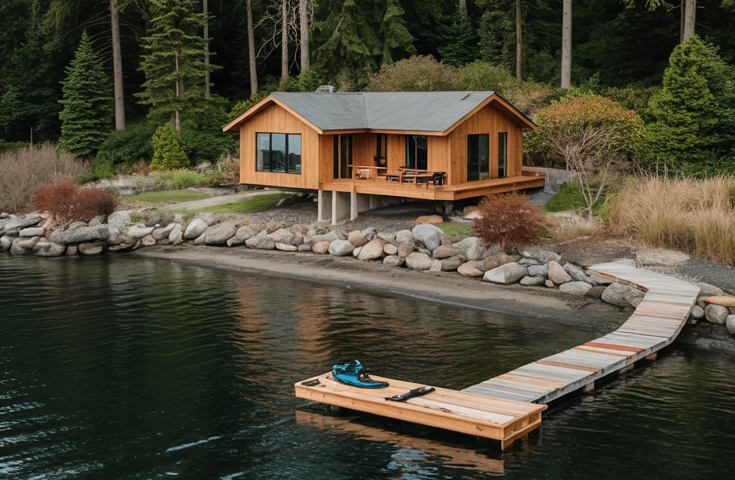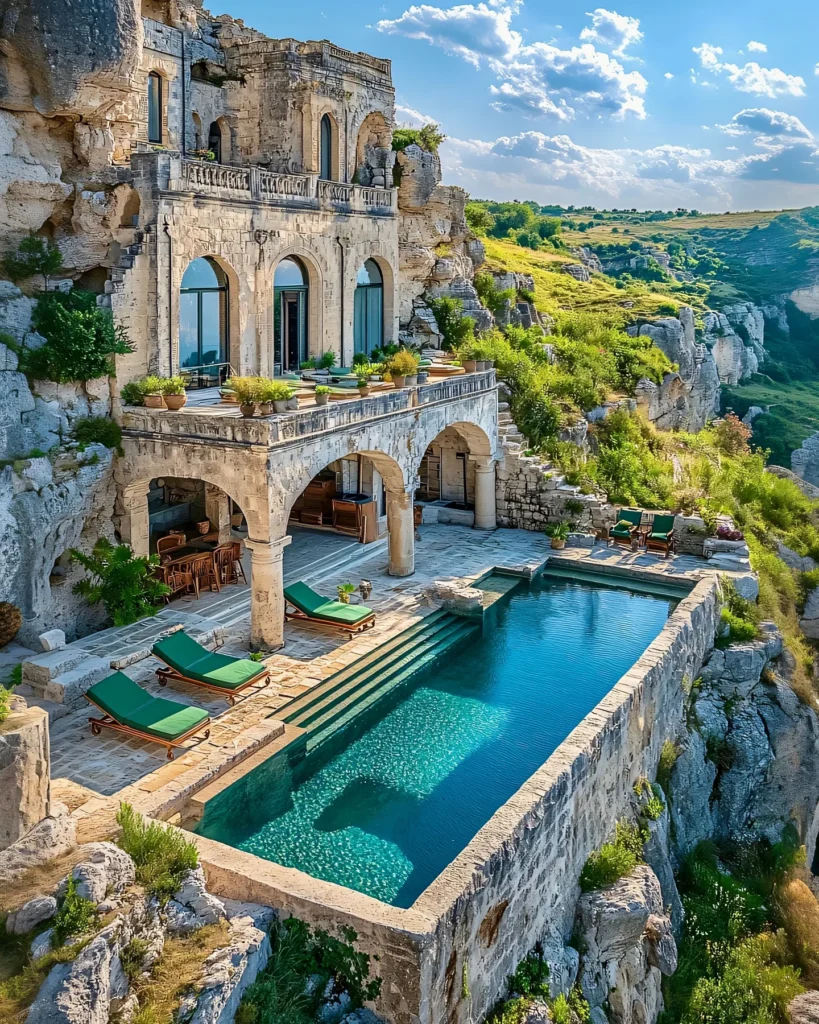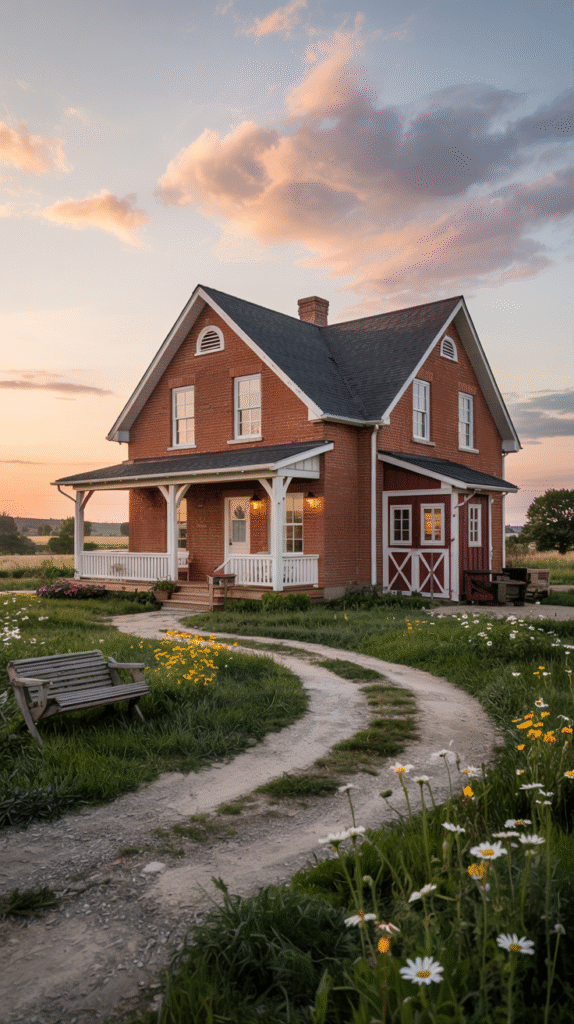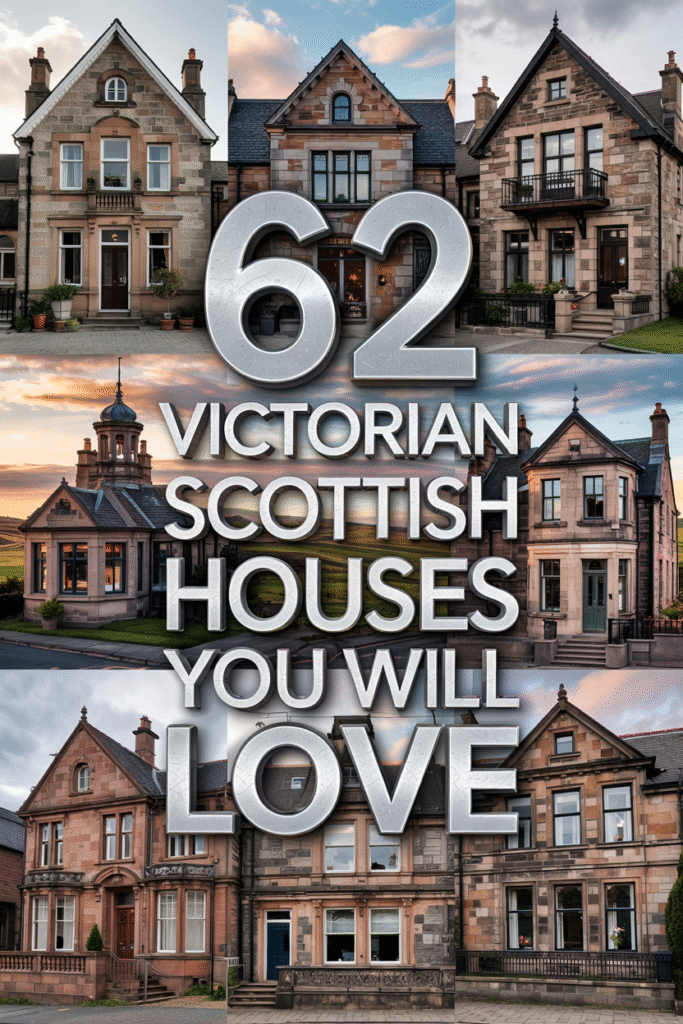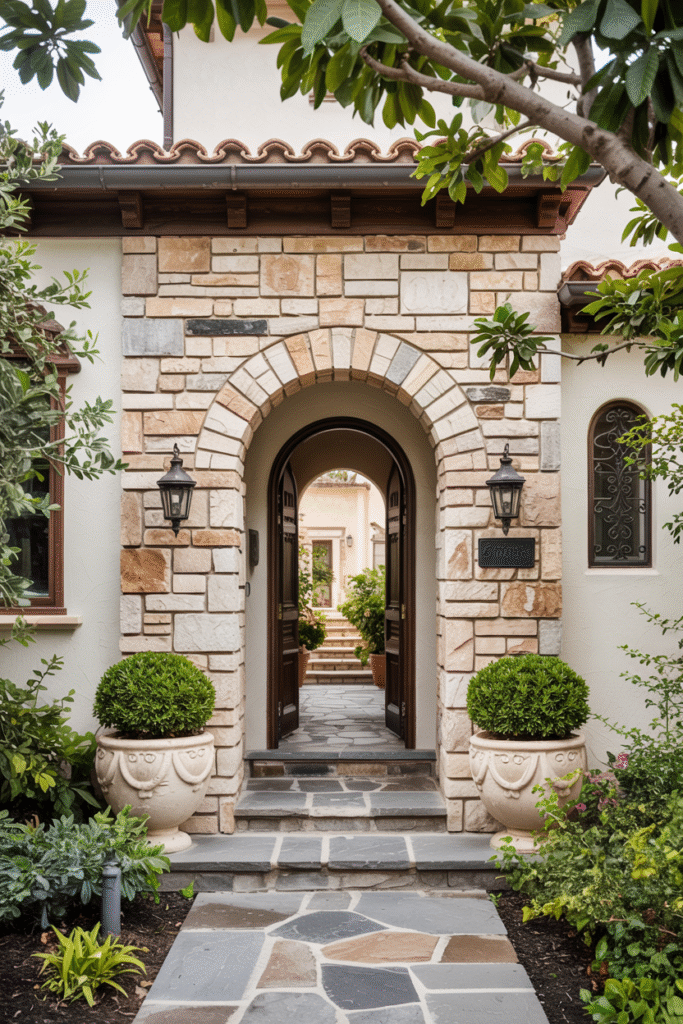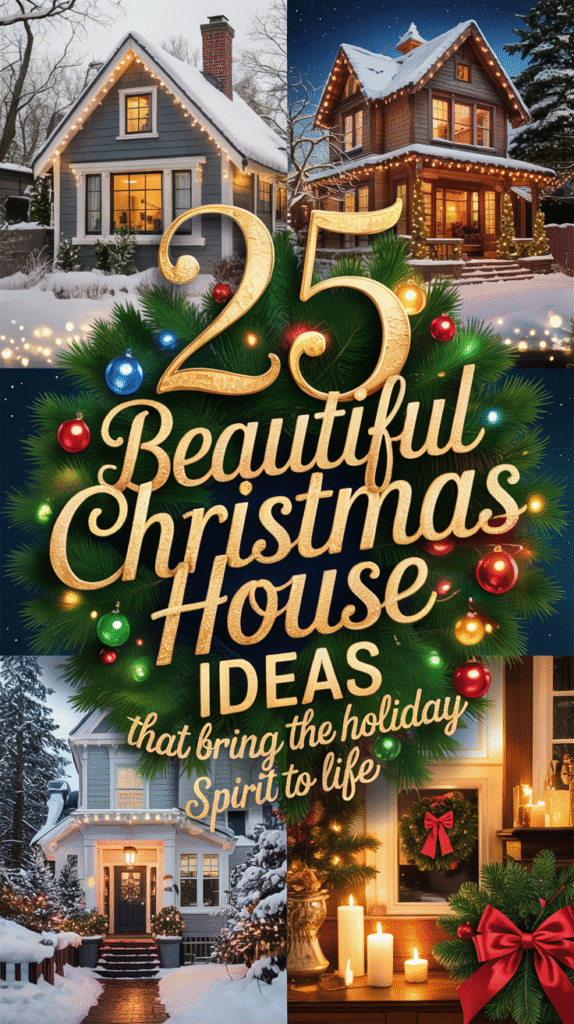Imagine stepping into a storybook village where every home exudes timeless charm, with roofs that crown quaint cottages like perfect, weathered hats. English cottage roof styles are the heart of this picturesque aesthetic, blending functionality with architectural poetry. From undulating thatch to rugged stone tiles, these roofs define the cozy, romantic allure of the English countryside. In this article, we’ll explore 25 distinct English cottage roof styles, each with its own character and history, offering inspiration for anyone dreaming of a home that feels like a warm embrace. Whether you’re an architecture enthusiast or planning your own cottage, these styles will captivate your imagination.
Key Facts About English Cottage Roof Styles
- Historical Roots: Many English cottage roof styles date back to medieval times, shaped by local materials and climate needs.
- Material Diversity: Common materials include thatch, slate, clay tiles, and stone, each contributing to regional character.
- Aesthetic Appeal: These roofs emphasize organic shapes, textures, and earthy tones, creating a harmonious blend with nature.
- Functionality: Designed to withstand England’s wet and windy weather, these roofs prioritize durability and insulation.
- Cultural Significance: English cottage roofs are iconic in literature and media, symbolizing cozy, rural life.
25 English Cottage Roof Styles
1. Classic Thatch
Thatch roofs are the quintessential English cottage style, evoking images of hobbit-like homes nestled in rolling hills. Made from tightly bundled straw, reeds, or heather, these roofs have a soft, wavy appearance that seems to grow from the landscape. Their thick layers provide excellent insulation, keeping cottages warm in winter and cool in summer. The golden-brown hue of thatch ages gracefully, blending seamlessly with ivy-clad walls.
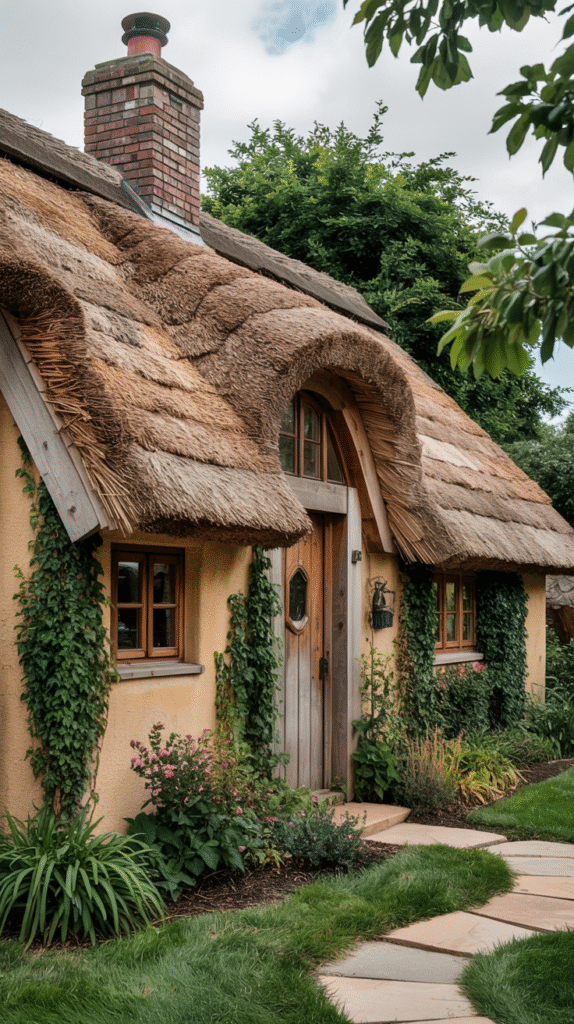
2. Norfolk Reed Thatch
A premium variation of thatch, Norfolk reed roofs use water reeds for a sleeker, more durable finish. Found in East Anglia, these roofs have a crisp, linear texture and a slightly silvery tone when new, maturing to a warm amber. Their steep pitch ensures water runoff, making them ideal for rainy regions.
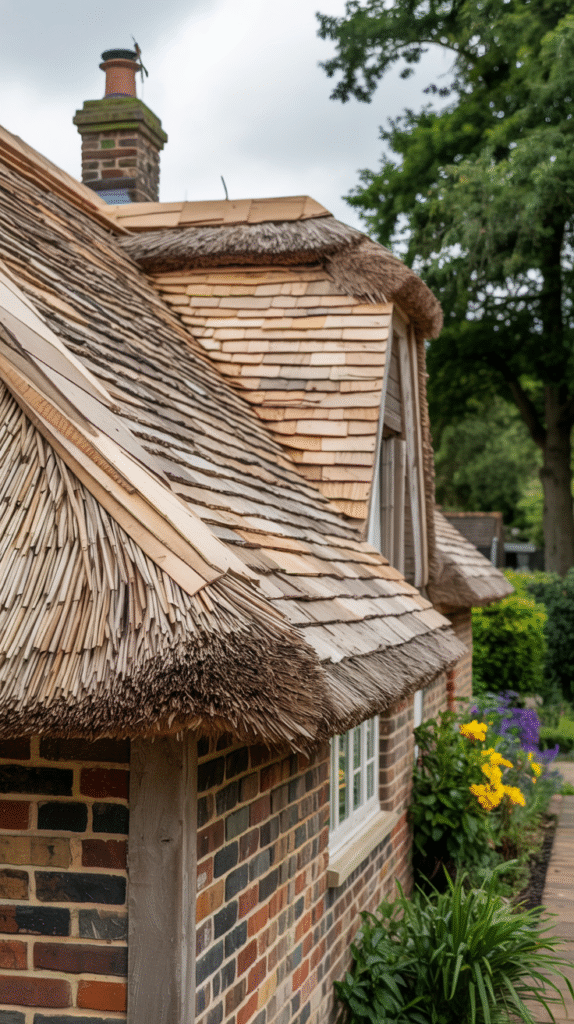
3. Combed Wheat Thatch
Combed wheat thatch, common in Devon and Cornwall, features tightly combed straw for a smoother, more uniform look than classic thatch. Its golden, almost glossy surface adds a polished charm, while the steep angles create dramatic rooflines that define many southwestern cottages.
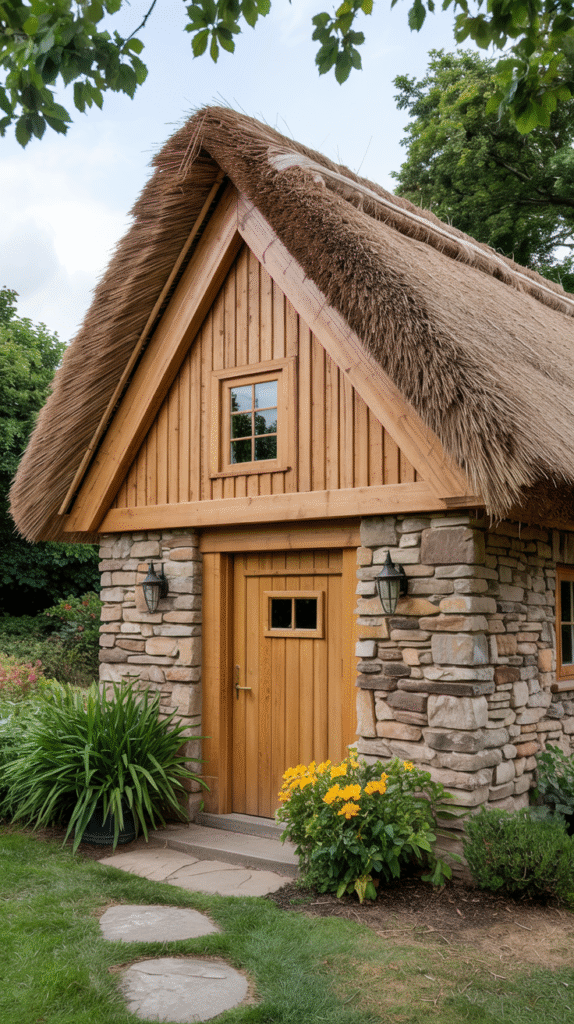
4. Heather Thatch
In northern England, heather thatch offers a rugged, earthy aesthetic. Its dense, fibrous texture and dark, mottled tones give cottages a wild, windswept look, perfect for moorland settings. Heather thatch is less common but prized for its unique, organic beauty.

5. Slate Tile Roof
Slate roofs, prevalent in the Cotswolds and Wales, feature thin, dark gray or blue slate tiles laid in neat rows. Their clean lines and subtle sheen contrast beautifully with stone walls, offering a refined yet rustic look. Slate is incredibly durable, often lasting over a century.

6. Welsh Slate Roof
A regional variant, Welsh slate roofs use high-quality slate from North Wales, known for its deep blue-black color and fine grain. These roofs have a sleek, elegant appearance, with tiles often cut into precise rectangles for a tailored finish.
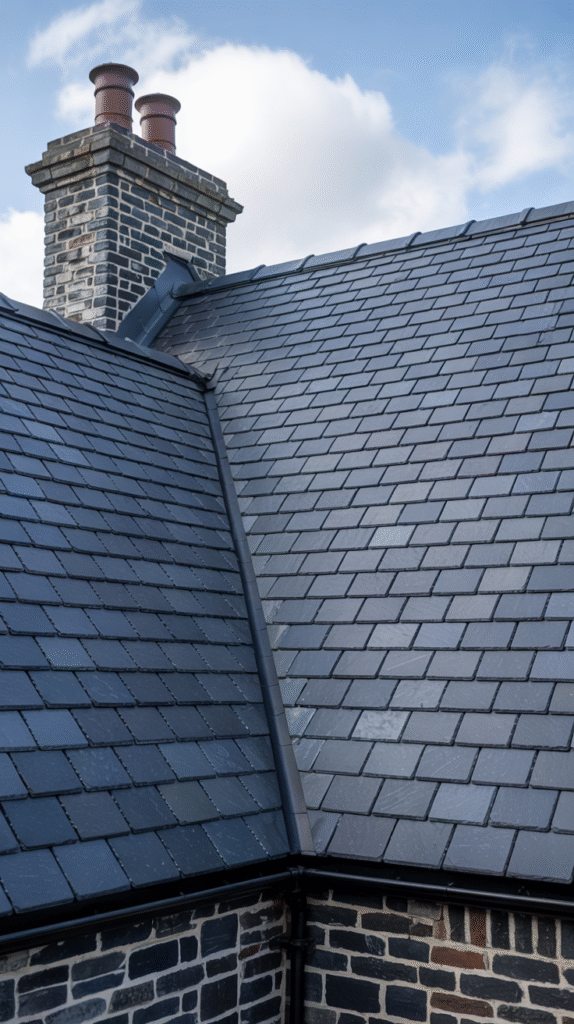
7. Cotswold Stone Tile Roof
Unique to the Cotswolds, these roofs use local limestone tiles that weather to a warm, honeyed patina. The tiles are cut into irregular shapes, creating a textured, almost mosaic-like surface that glows in sunlight, enhancing the region’s golden-hued cottages.
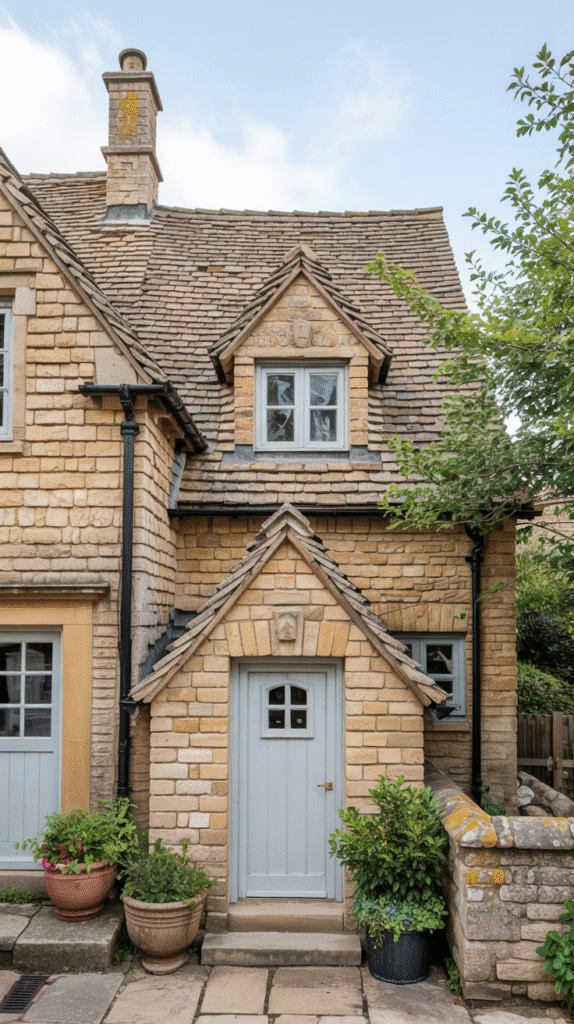
8. Clay Tile Roof
Clay tile roofs, found across southern England, feature curved, reddish-orange tiles that add Mediterranean warmth to the cottage aesthetic. Their interlocking design ensures weather resistance, while the vibrant color complements whitewashed or timber-framed walls.
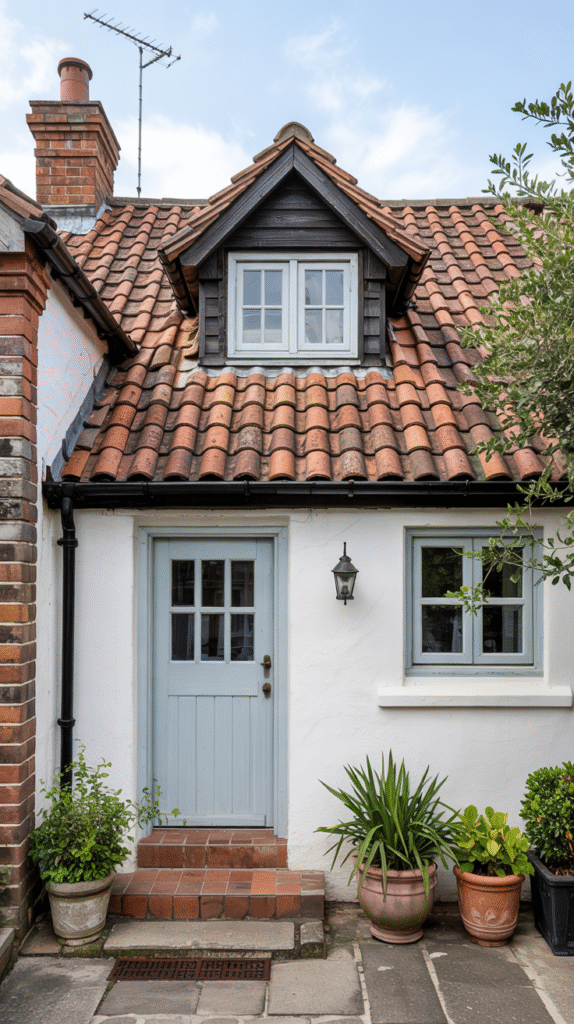
9. Pantile Roof
Pantile roofs, with their distinctive S-shaped clay tiles, are common in East Anglia. The undulating pattern creates a rhythmic, wave-like effect, adding movement to the roofline. Their rich terracotta tones bring a bold yet traditional charm.
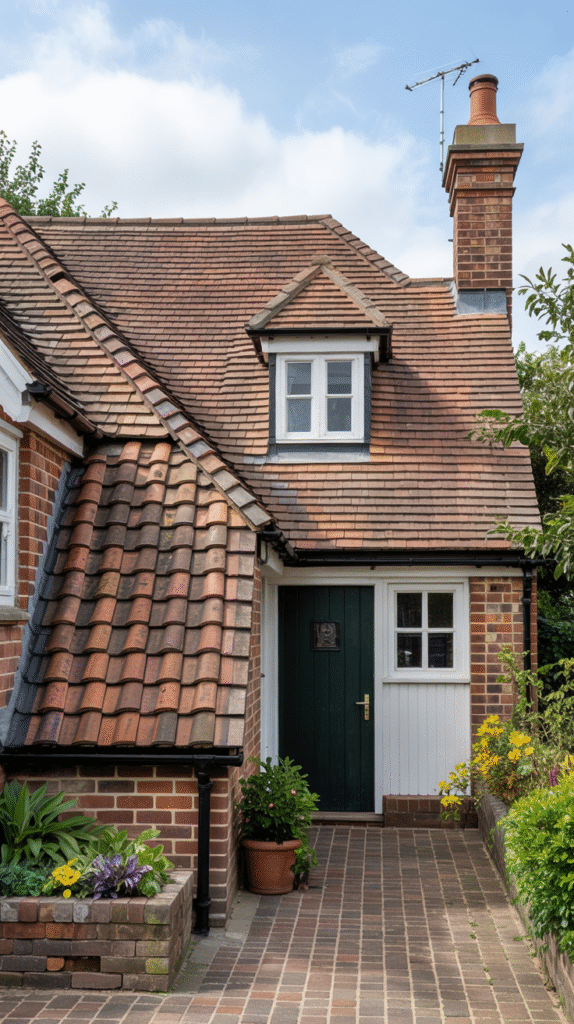
10. Roman Tile Roof
Inspired by ancient designs, Roman tile roofs use larger, curved clay tiles with a pronounced profile. These roofs have a robust, sculptural quality, often seen in grander cottages or those influenced by classical architecture.
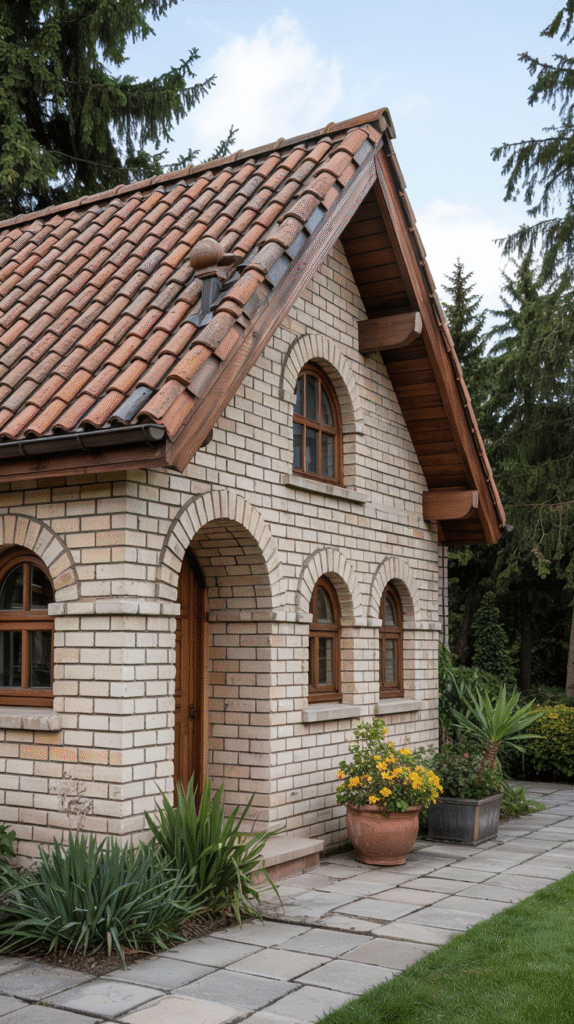
11. Fishscale Tile Roof
Fishscale tiles, named for their scalloped, fish-like shape, create a decorative, almost whimsical roof pattern. Often made of clay or slate, these tiles are laid in overlapping rows, adding texture and charm to smaller cottages.
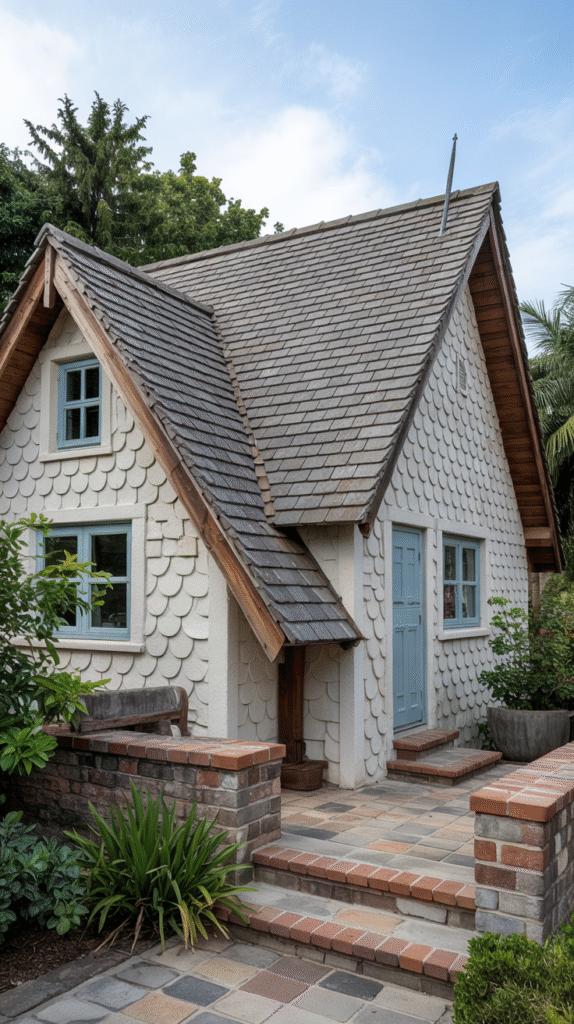
12. Diamond Pattern Slate Roof
This style features slate tiles cut into diamond shapes, arranged in a geometric pattern. The result is a striking, almost quilted effect, often seen in historic cottages or those aiming for a bespoke, artistic look.
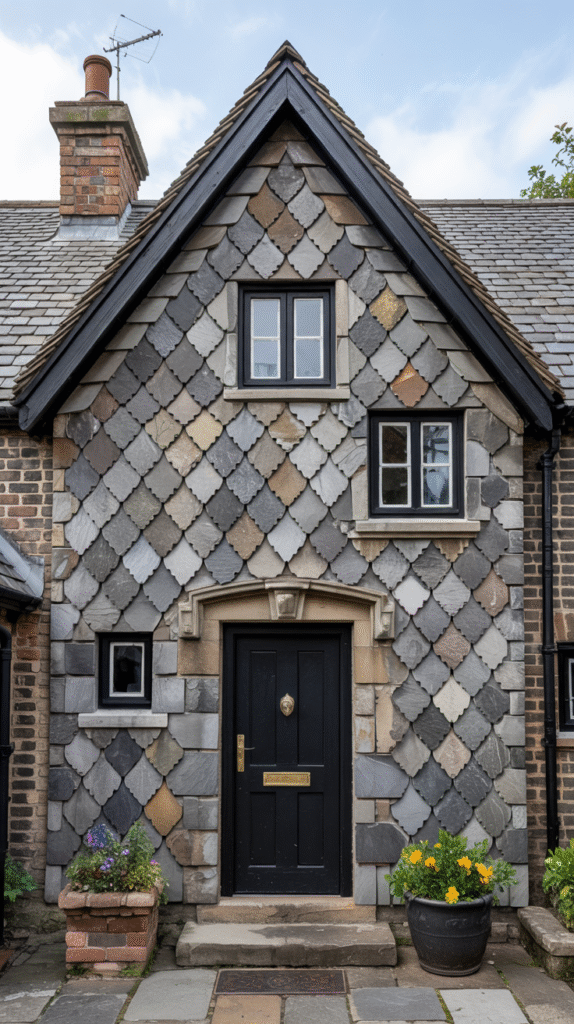
13. Stone Flag Roof
In northern regions like Yorkshire, stone flag roofs use thick, heavy stone slabs for a rugged, fortress-like appearance. Their uneven surfaces and earthy tones blend seamlessly with the harsh, rocky landscapes.
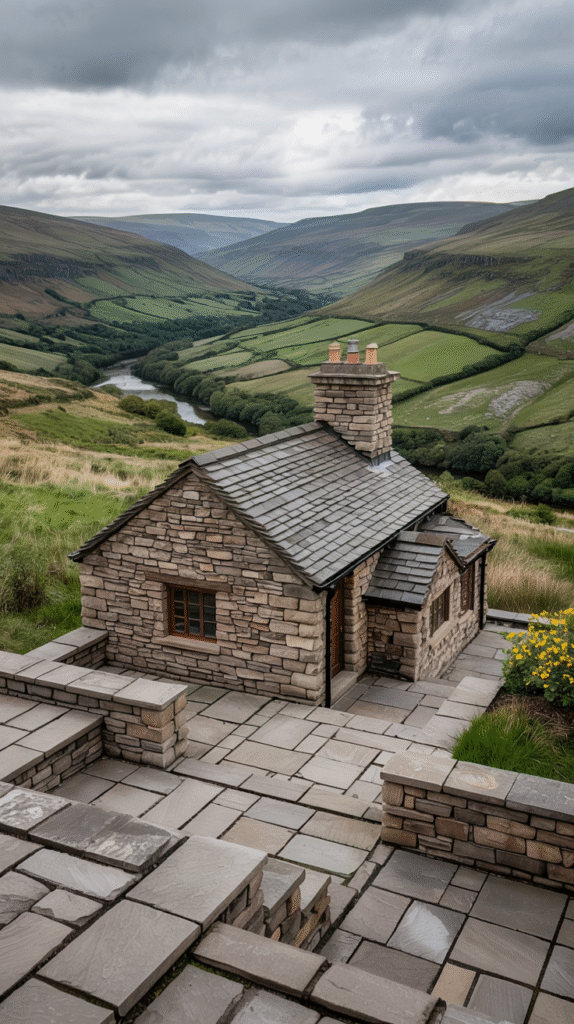
14. Horsham Stone Roof
Unique to Sussex, Horsham stone roofs use large, flat sandstone slabs. Their warm, reddish-brown color and irregular edges give cottages a grounded, ancient feel, as if carved from the earth itself.

15. Collyweston Slate Roof
Found in the Midlands, Collyweston slate roofs use limestone slate that splits into thin, durable tiles. Their pale, silvery-gray hue and subtle texture create a refined, understated elegance.
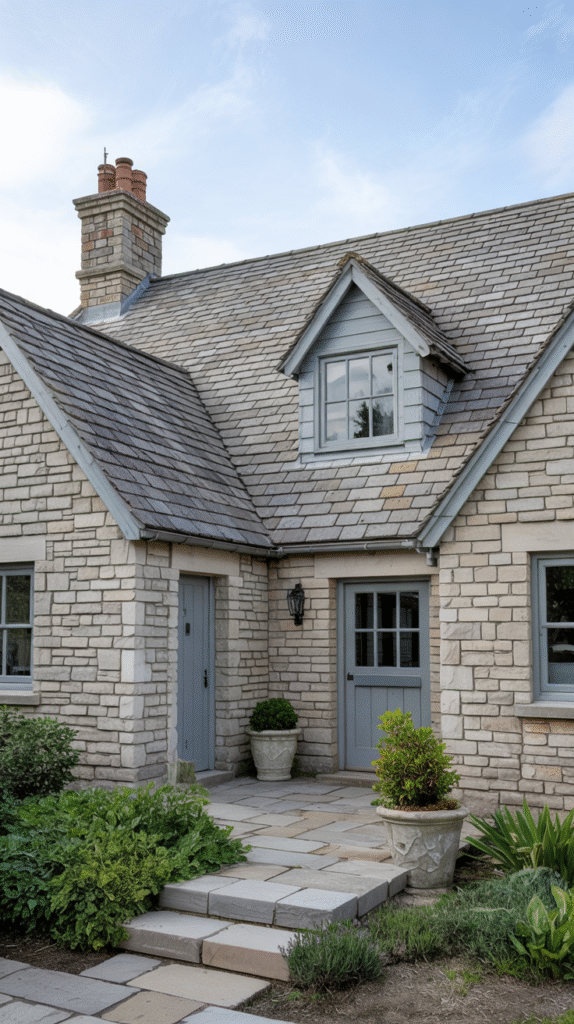
16. Shingle Roof
Wooden shingle roofs, though less common, use split timber to create a rustic, handcrafted look. The shingles weather to a soft gray, blending with natural surroundings and adding a tactile, organic quality.
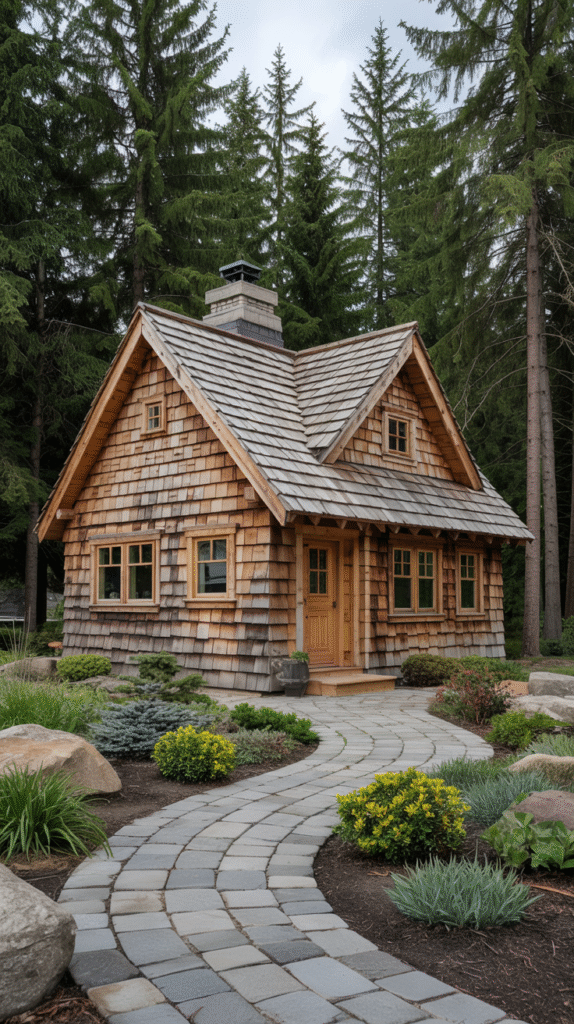
17. Half-Hipped Thatch Roof
A hybrid style, half-hipped thatch roofs combine the soft curves of thatch with a partially hipped structure, where the roof slopes gently at the gable ends. This creates a cozy, tucked-in appearance, ideal for smaller cottages.
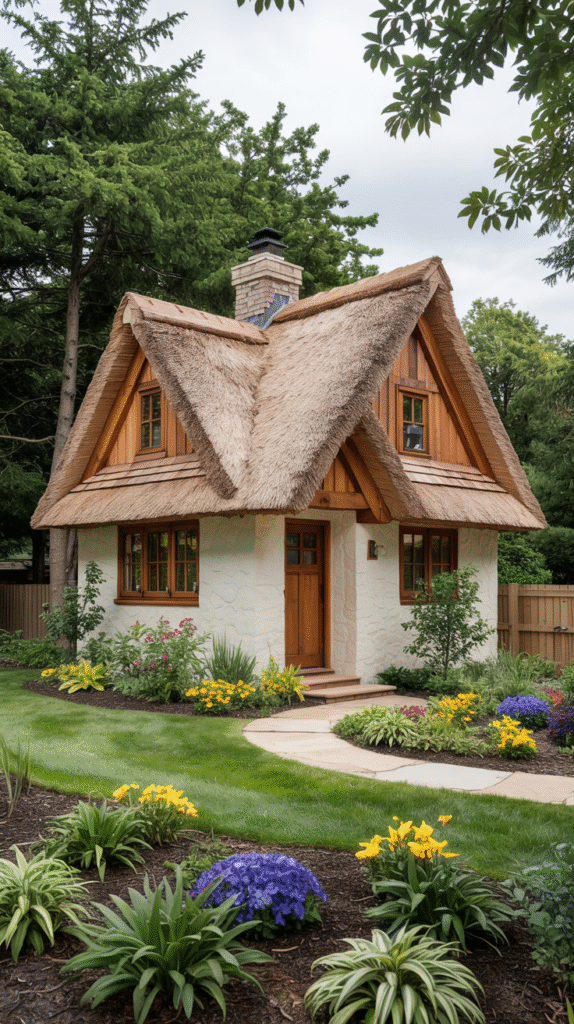
18. Catslide Thatch Roof
Catslide roofs feature a long, sloping extension on one side, often covering a lean-to or porch. This asymmetrical design adds a playful, storybook charm, with thatch cascading like a waterfall over the cottage.
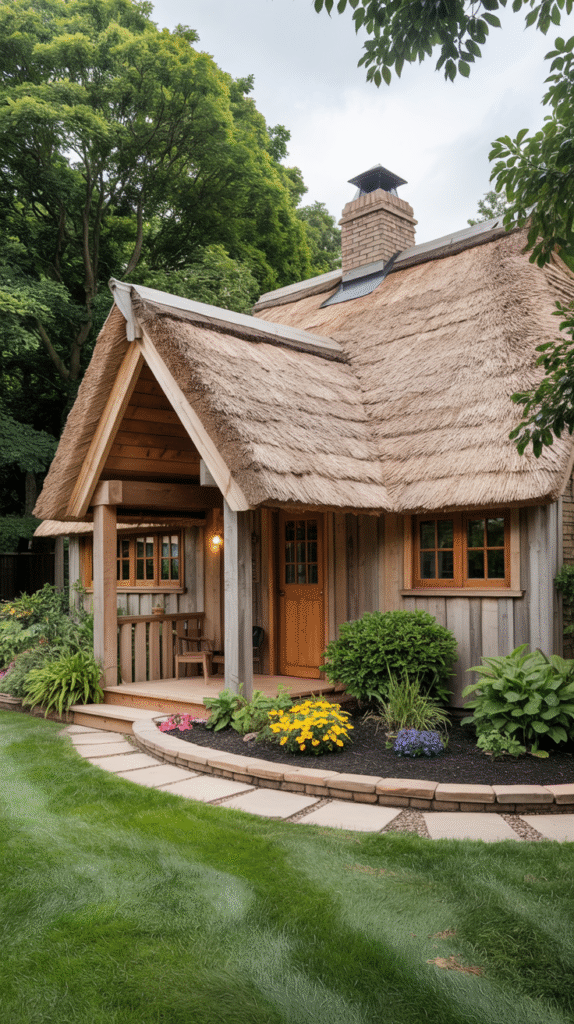
19. Gabled Thatch Roof
Gabled thatch roofs have steep, triangular gables that emphasize height and symmetry. The thick thatch softens the sharp angles, creating a balanced, inviting silhouette popular in southern England.
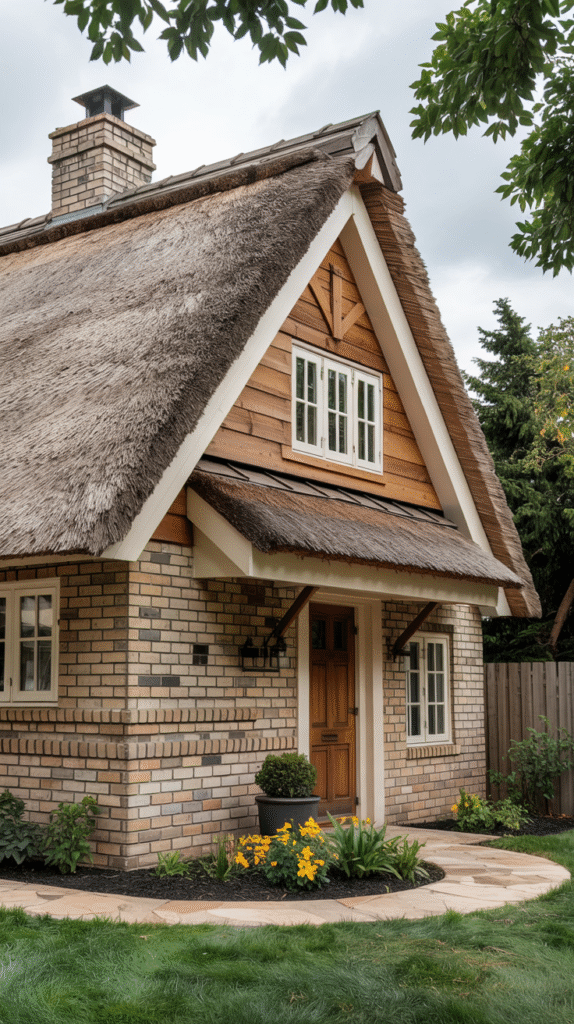
20. Hipped Slate Roof
Hipped slate roofs slope on all sides, creating a compact, sturdy structure. The slate’s sleek surface and the roof’s gentle slopes give cottages a polished, timeless look, often seen in larger homes.
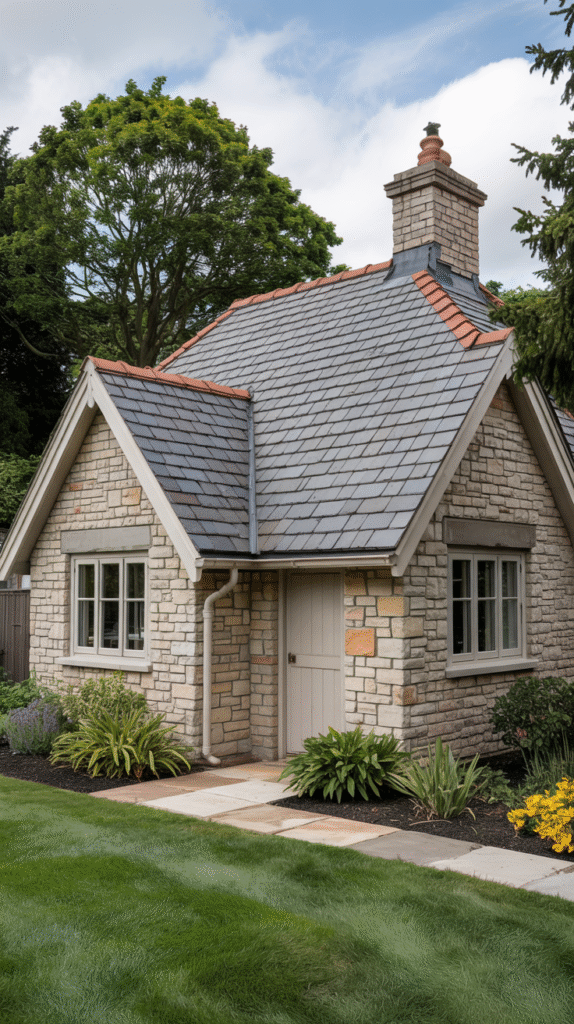
21. Mansard Thatch Roof
Borrowing from French influences, mansard thatch roofs have a double slope—steep at the bottom and flatter at the top. This maximizes attic space while maintaining the cozy thatch aesthetic.
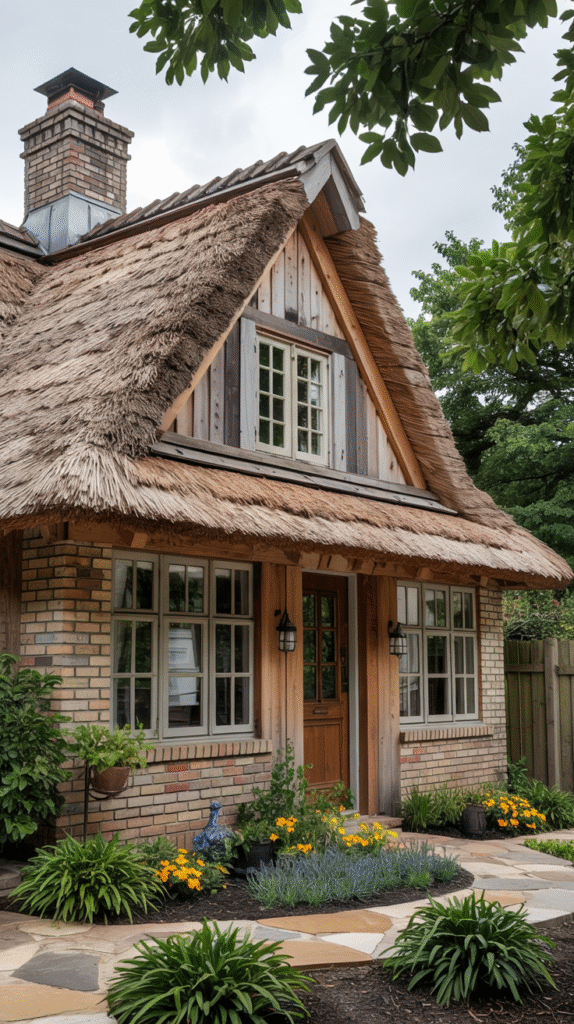
22. Swept Valley Thatch Roof
Swept valley roofs feature thatch that curves gracefully into valleys where roof sections meet. This fluid, organic design enhances the cottage’s connection to its natural surroundings.
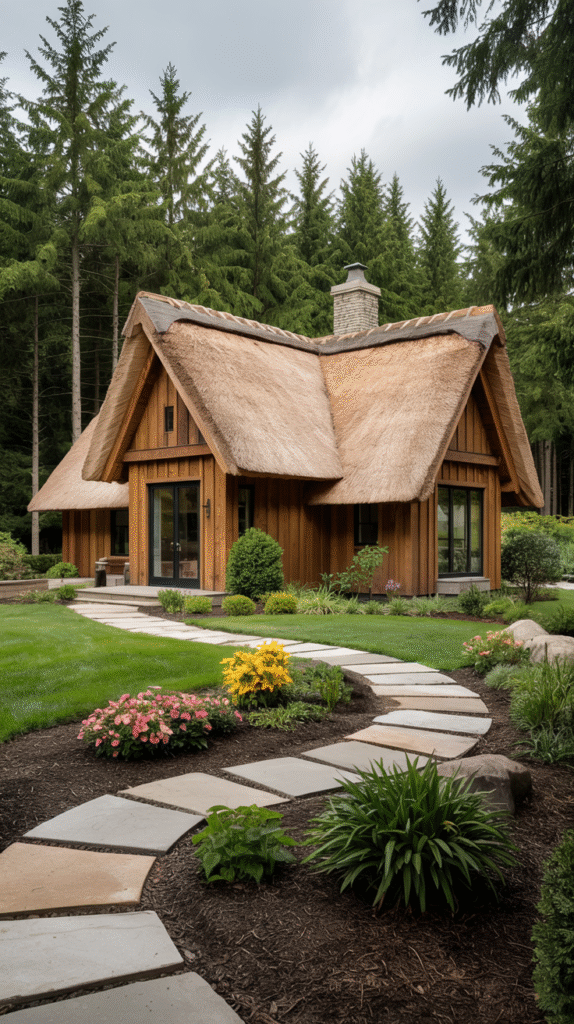
23. Turreted Thatch Roof
Rare but enchanting, turreted thatch roofs crown small, rounded turrets or dormers. The thatch wraps around these features, creating a fairy-tale-like silhouette that’s perfect for whimsical cottages.
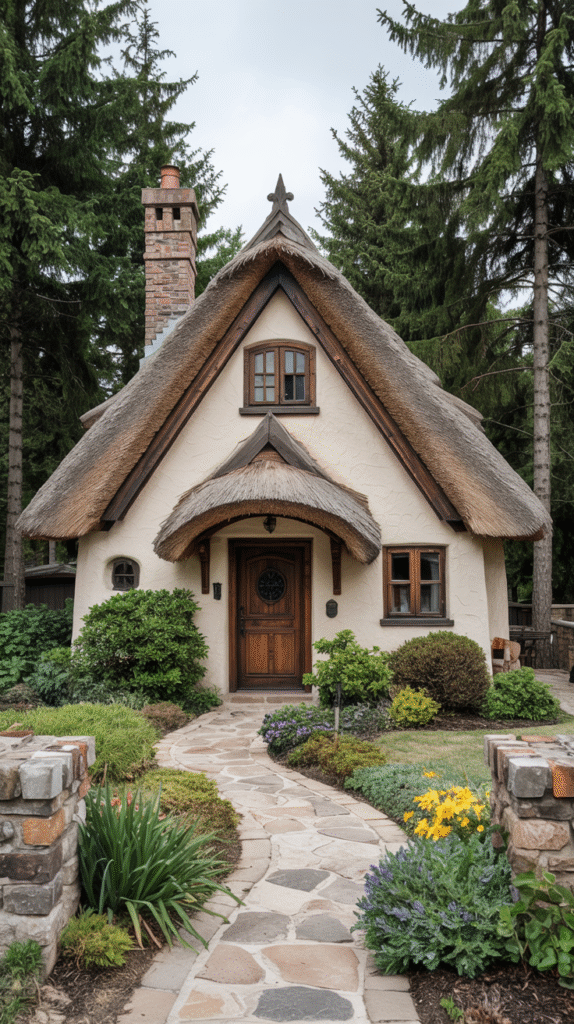
24. Clipped Gable Slate Roof
Clipped gable roofs, also called jerkinhead roofs, feature slate tiles with gable ends that are partially hipped. This hybrid style adds a quirky, compact charm to traditional cottages.

25. Dormer Thatch Roof
Dormer thatch roofs incorporate small, protruding dormer windows, with thatch flowing around them like a blanket. This style adds character and light to attic spaces, enhancing the cottage’s cozy appeal.
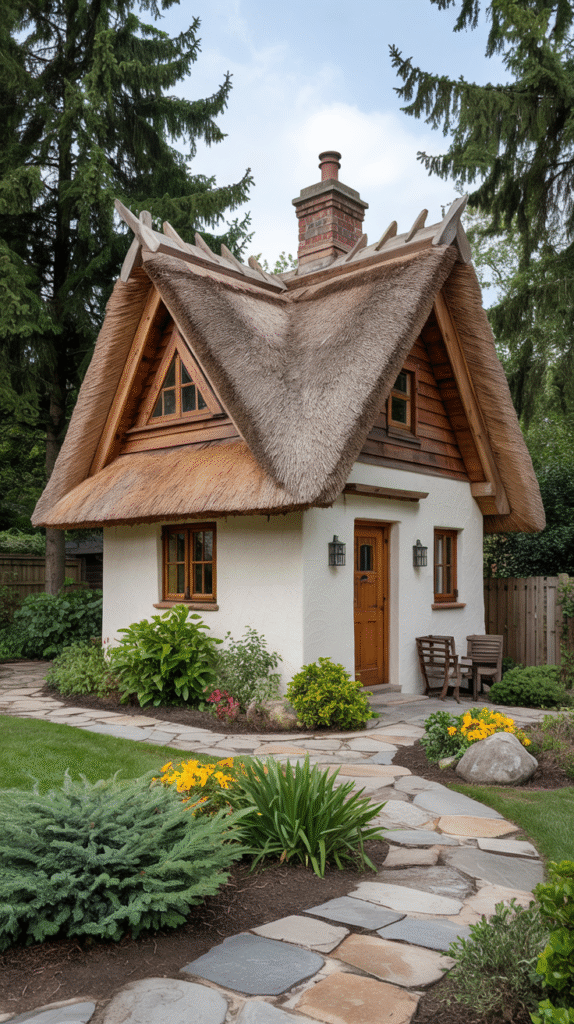
FAQs About English Cottage Roof Styles
Q: What is the most iconic English cottage roof style?
A: Classic thatch is arguably the most iconic, symbolizing the quintessential English countryside cottage with its warm, organic appearance.
Q: Are thatch roofs high maintenance?
A: Thatch roofs require regular maintenance, such as re-ridging every 10-15 years, but with proper care, they can last 40-50 years or more.
Q: Why are slate roofs popular in certain regions?
A: Slate is abundant in areas like Wales and the Cotswolds, and its durability makes it ideal for England’s wet climate.
Q: Can modern homes adopt English cottage roof styles?
A: Absolutely! Many modern homes incorporate thatch, slate, or clay tiles to capture the cottage aesthetic while meeting contemporary building standards.
Q: Are these roof styles eco-friendly?
A: Many, like thatch and slate, use natural, locally sourced materials, making them sustainable choices when maintained properly.
Conclusion
English cottage roof styles are more than just architectural features—they’re a celebration of history, craftsmanship, and harmony with nature. From the rustic charm of thatch to the enduring elegance of slate, these 25 styles offer endless inspiration for creating a home that feels both timeless and deeply personal. Whether you’re drawn to the whimsical curves of a catslide roof or the sturdy simplicity of Cotswold stone, there’s a style to suit every dream. As you plan your next project or simply indulge in the romance of English cottages, let these roofs remind you that beauty and function can coexist in perfect harmony.

